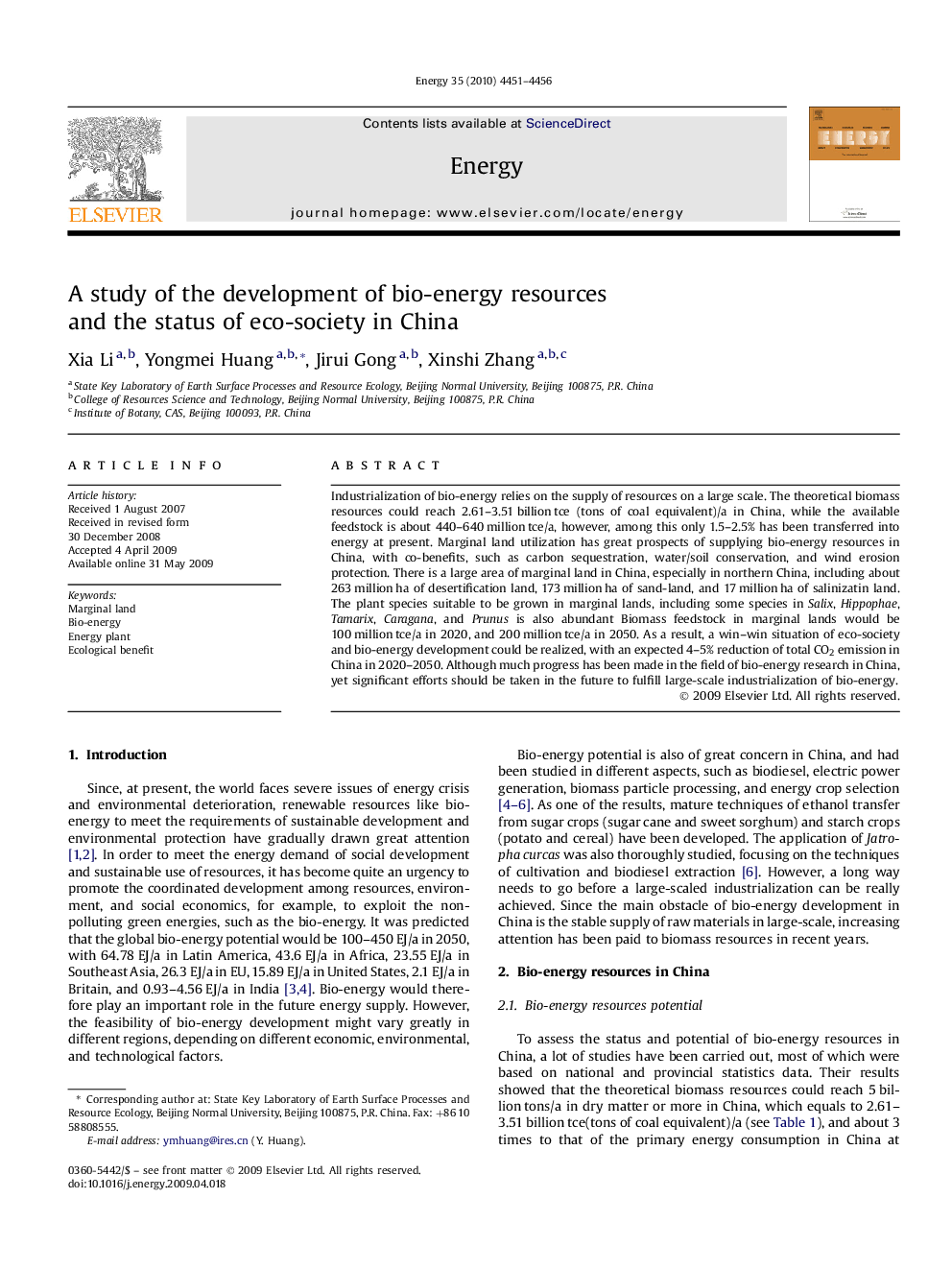| Article ID | Journal | Published Year | Pages | File Type |
|---|---|---|---|---|
| 1734852 | Energy | 2010 | 6 Pages |
Industrialization of bio-energy relies on the supply of resources on a large scale. The theoretical biomass resources could reach 2.61–3.51 billion tce (tons of coal equivalent)/a in China, while the available feedstock is about 440–640 million tce/a, however, among this only 1.5–2.5% has been transferred into energy at present. Marginal land utilization has great prospects of supplying bio-energy resources in China, with co-benefits, such as carbon sequestration, water/soil conservation, and wind erosion protection. There is a large area of marginal land in China, especially in northern China, including about 263 million ha of desertification land, 173 million ha of sand-land, and 17 million ha of salinizatin land. The plant species suitable to be grown in marginal lands, including some species in Salix, Hippophae, Tamarix, Caragana, and Prunus is also abundant Biomass feedstock in marginal lands would be 100 million tce/a in 2020, and 200 million tce/a in 2050. As a result, a win–win situation of eco-society and bio-energy development could be realized, with an expected 4–5% reduction of total CO2 emission in China in 2020–2050. Although much progress has been made in the field of bio-energy research in China, yet significant efforts should be taken in the future to fulfill large-scale industrialization of bio-energy.
